Imaging Lenses for UAVs
Table of Contents
- Unique Application Requirements of UAV Imaging
- Brief History of UAV Imaging
- Ruggedizing UAV Lenses for Harsh Environments
- UAV Imaging Lenses from Edmund Optics®
Machine vision is no longer confined to automated factories. Autonomous vehicles, agriculture equipment, drones, and other robotics are pushing high-resolution imaging lenses into new environments, many of which have very different requirements than traditional machine vision settings. For example, high-resolution unmanned aerial vehicle (UAV) imaging is becoming increasingly popular for mapping and surveying, agricultural inspection, photogrammetry, and more.
Lenses for UAV imaging are exposed to wildly different pressure, temperature, and shock and vibration conditions than standard machine vision applications. Neither conventional machine vision lenses nor the small, cheap lenses used for consumer drones are adequate for the demanding applications of fixed-wing UAVs and other higher-performance robotics systems. The UAV Series Fixed Focal Length Lenses from Edmund Optics® were developed to enable these newer, high-performance UAV applications.
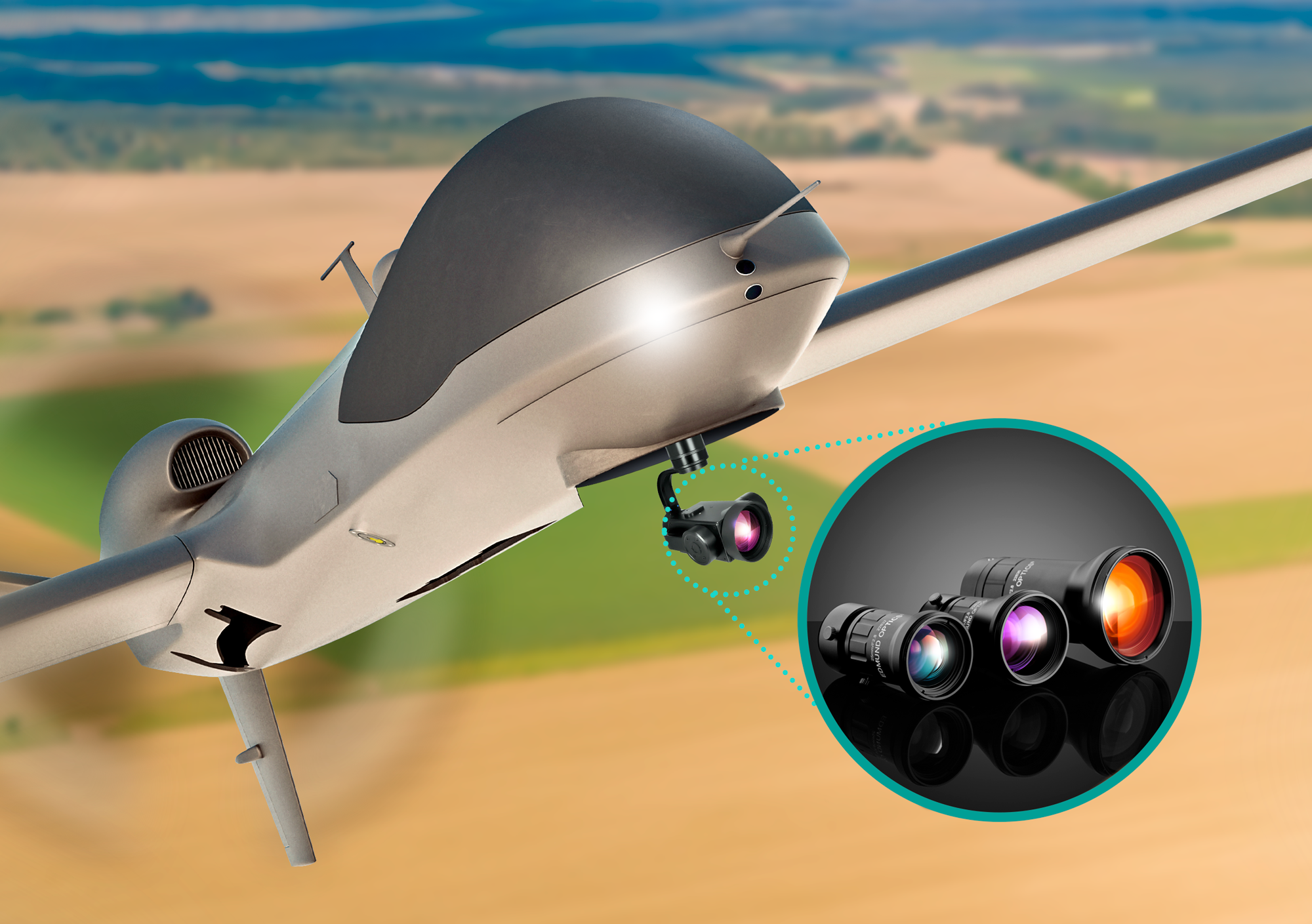
Figure 1: The imaging lenses needed for high-resolution UAV applications have demanding requirements beyond both traditional machine vision lenses and the small, cheap lenses used for consumer drones. The UAV Series Fixed Focal Length Lenses were designed specifically for these systems.
Unique Application Requirements of UAV Imaging
Imaging systems are crucial for proper positioning, guidance, and data gathering for UAVs. Many applications use machine vision from UAVs to image large areas of land to assess the environment and obtain various useful types of data.
Photogrammetry
For example, photogrammetry combines overlapping 2D images for mapping 3D areas. Ground sample distance (GSD), the altitude at which aerial photogrammetry takes place, is related to the Nyquist frequency, or best possible spatial resolution, of the imaging system and the objects being imaged.1 Therefore, a high-resolution imaging system allows the UAV to go higher in altitude, resulting in a wider field of view and fewer photos needing to be taken. Current military drone technology allows drones to fly up to 50,000 ft. or 15.2km, which presents many challenges for their imaging systems.2 Temperature and pressure can also vary between ~30˚C to -50˚C and 100kPa to ~20kPa, respectively, at these high altitudes (Figure 2).
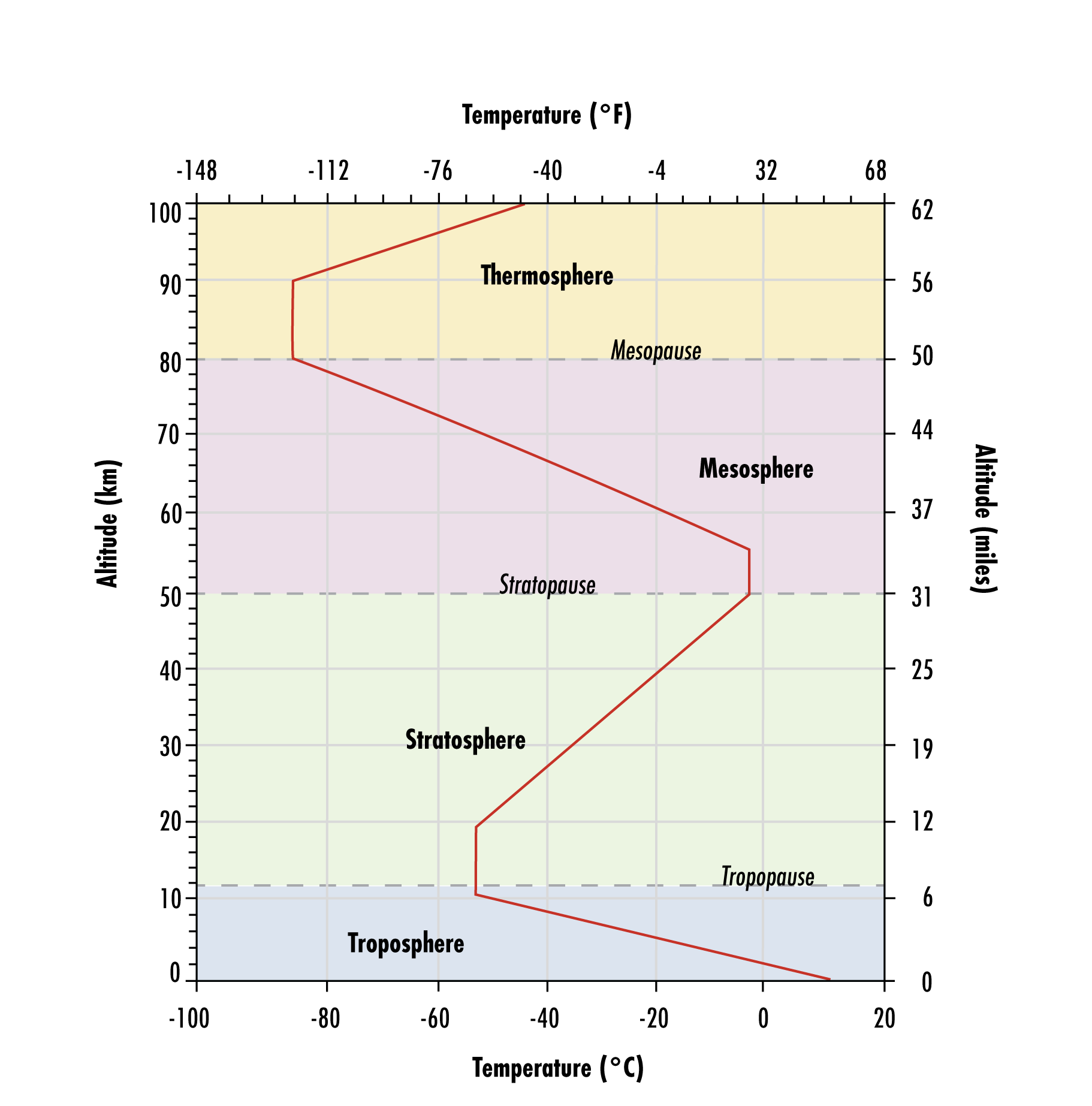
Figure 2: Temperature variations in the atmosphere with respect to altitude3
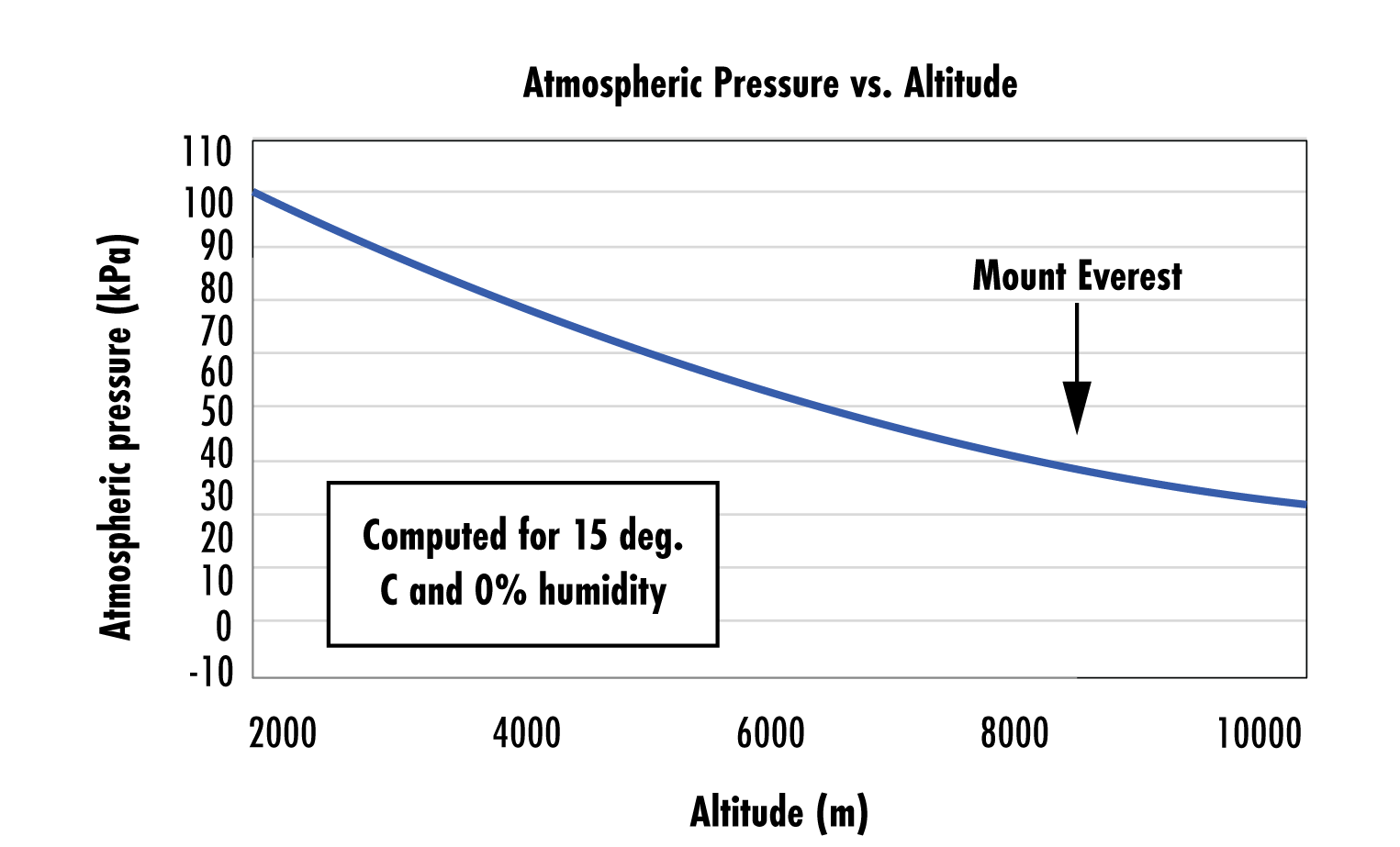
Figure 3: Pressure variation in the atmosphere with respect to altitude4
These harsh conditions can cause elements in the lens assembly to decenter and shift, hindering resolution/accuracy and making the imaging system the limiting factor for system performance. Finding ways to improve the imaging capabilities of machine vision systems is of particular importance for photogrammetry in order to continue advancing these systems' capabilities.
Multi- and Hyperspectral Imaging
Another important application in the UAV imaging space is multi- and hyperspectral imaging of crops for agriculture and environmental surveying. Multispectral imaging involves recording data in multiple separate wavelength bands, while hyperspectral imaging involves recording data over a single, large, continuous range of wavelengths.
The same principles of GSD discussed for photogrammetry apply to these applications, but multi- and hyperspectral imaging also have an important dependence on wavelength, further complicating the challenges faced by the imaging optics. Optical designers now have to balance working across a very broad wavelength range in addition to both environmental ruggedization and maintaining high resolution. The spectral resolution of a system is the smallest size of wavebands the system can distinguish. Multispectral imaging has lower spectral resolution than hyperspectral imaging, but it is easier to design and typically less expensive. The exact method of spectral imaging needed varies between situations. Many types of vegetation show wildly different properties at certain wavelengths outside of the visible spectrum.
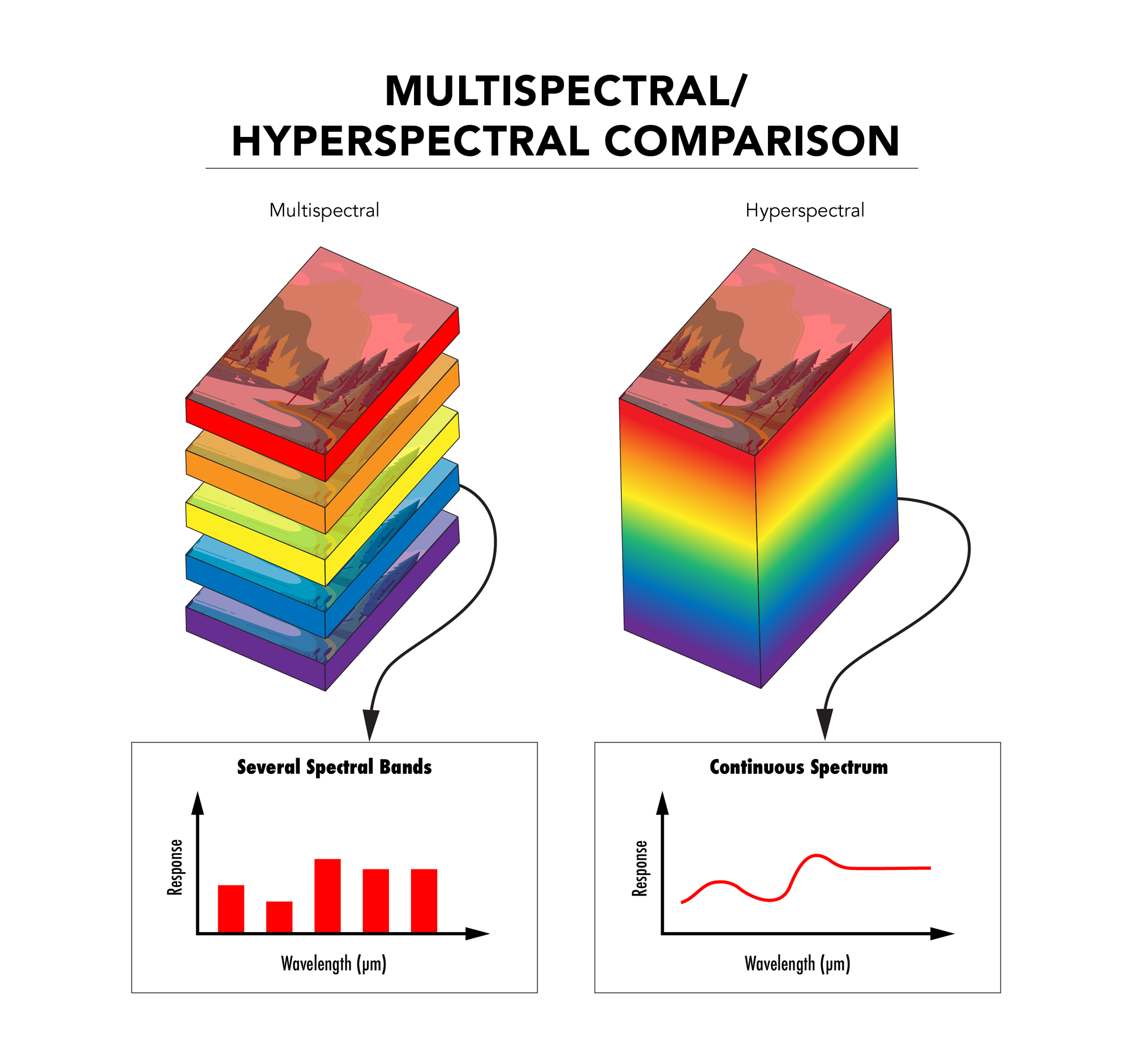
Figure 4: The difference between multispectral and hyperspectral imaging is whether wavelength information is represented discretely or continuously, respectively
Additional Applications
In military applications, UAVs are becoming increasingly used for target decoys, general combat missions, and surveillance. In the commercial space, UAVs are transforming disaster relief, archeology, and mining by utilizing similar concepts as photogrammetry and environmental imaging to reduce time and labor.
Brief History of UAV Imaging
During the introduction of machine vision systems for factory automation, C-mount lenses were repurposed from the security space. UAV and autonomous mobile robot (AMR) applications have now been repurposing lenses from the factory automation space, but these lenses are not ideal for these robotics systems.
UAV imaging applications are pushing to higher and higher resolutions using new, high-resolution image sensors like the 4th-generation Sony Pregius 1.2” IMX530 and IMX540 sensors. The C-mount lenses repurposed from factory automation systems are too large, heavy, and susceptible to performance degradation from the harsh environments to which UAVs are subjected in order to be effective. On the other hand, the small, compact lenses often used in commercial drones cannot achieve high enough resolutions to take full advantage of these newer sensors, making moving to these sensors a waste.
Normally, lenses need to grow in size, weight, and complexity in order to accommodate higher resolutions, but the UAV Series Lenses maintain a compact size while achieving up to 24.6 megapixel resolution on 2.74µm pixel size sensors. These lenses are discussed more in the section below on UAV Imaging Lenses from Edmund Optics®.
Ruggedizing UAV Lenses for Harsh Environments
As mentioned earlier, the altitude and speed at which UAVs operate create a harsh environment that affects a lens's performance. Temperature changes lead to shifts in the physical size of objects at a rate dependent on their coefficient of thermal expansion (CTE), and glass and metal expand and contract at different rates because of their different CTEs (Figure 5).
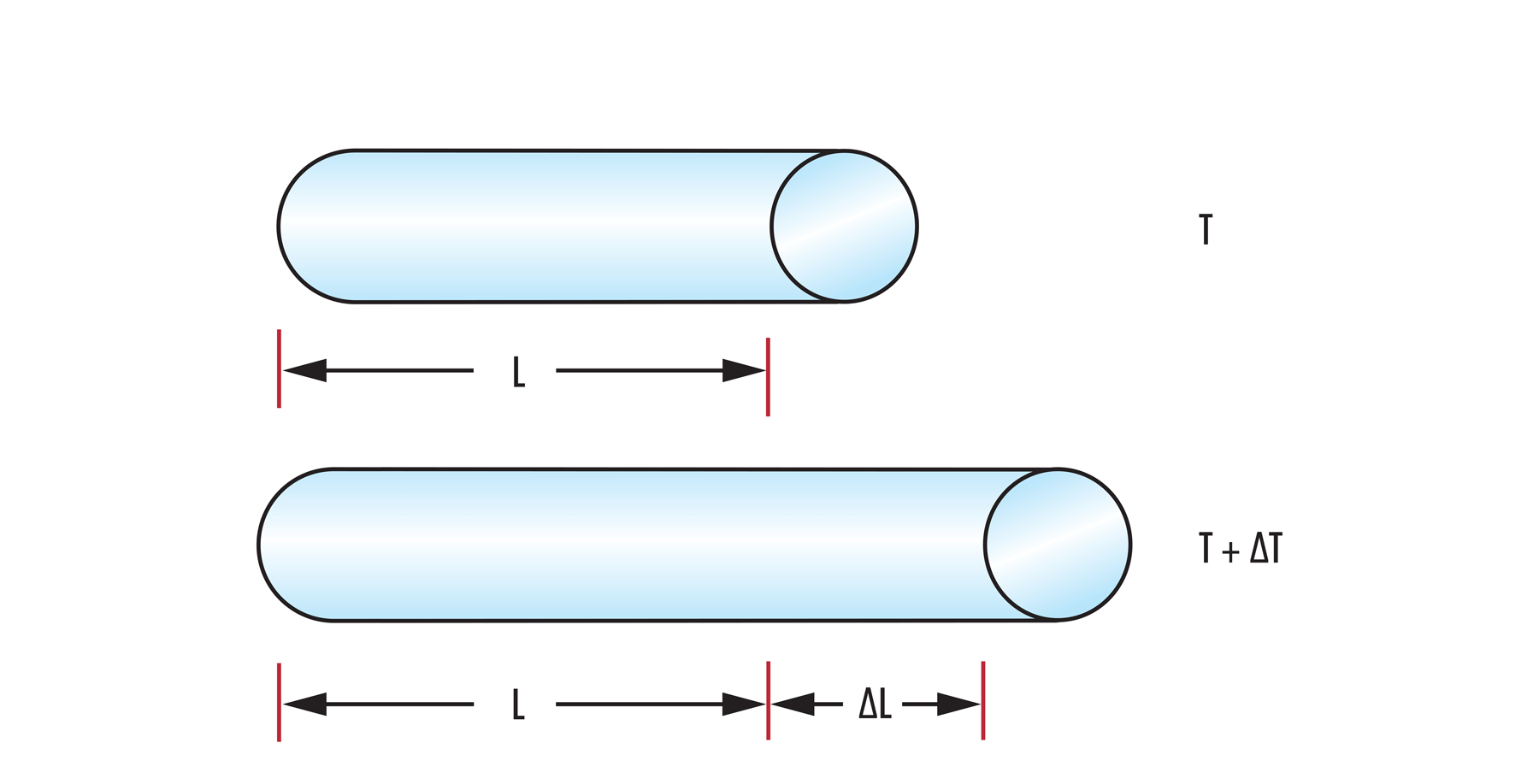
Figure 5: Changes in temperature (ΔT) lead to a change in the length of a material (ΔL) based on the material’s linear CTE. But in reality, this expansion happens in all three spatial dimensions, not just linearly in one dimension, as shown here.
The mismatch in CTEs between glass and metal in an imaging assembly introduces the potential for elements in the lens to shift, introduce tilt or general misalignment, or even crack when heated or cooled. All of these effects reduce imaging performance. The refractive index of the lens also shifts with temperature, but the effects of the phenomenon impact system performance less than the changing of physical size due to thermal expansion. The goal then becomes to reduce the shift in the lens assembly elements and reduce the lens’ sensitivity to misalignment.
Designing the lens assembly so that other elements compensate for these changes when they all expand and contract prevents the misalignment of the individual elements from thermal effects (Figure 6). These kinds of athermalized designs are more rigorous and time-consuming, but they maintain steady performance across a given temperature range.
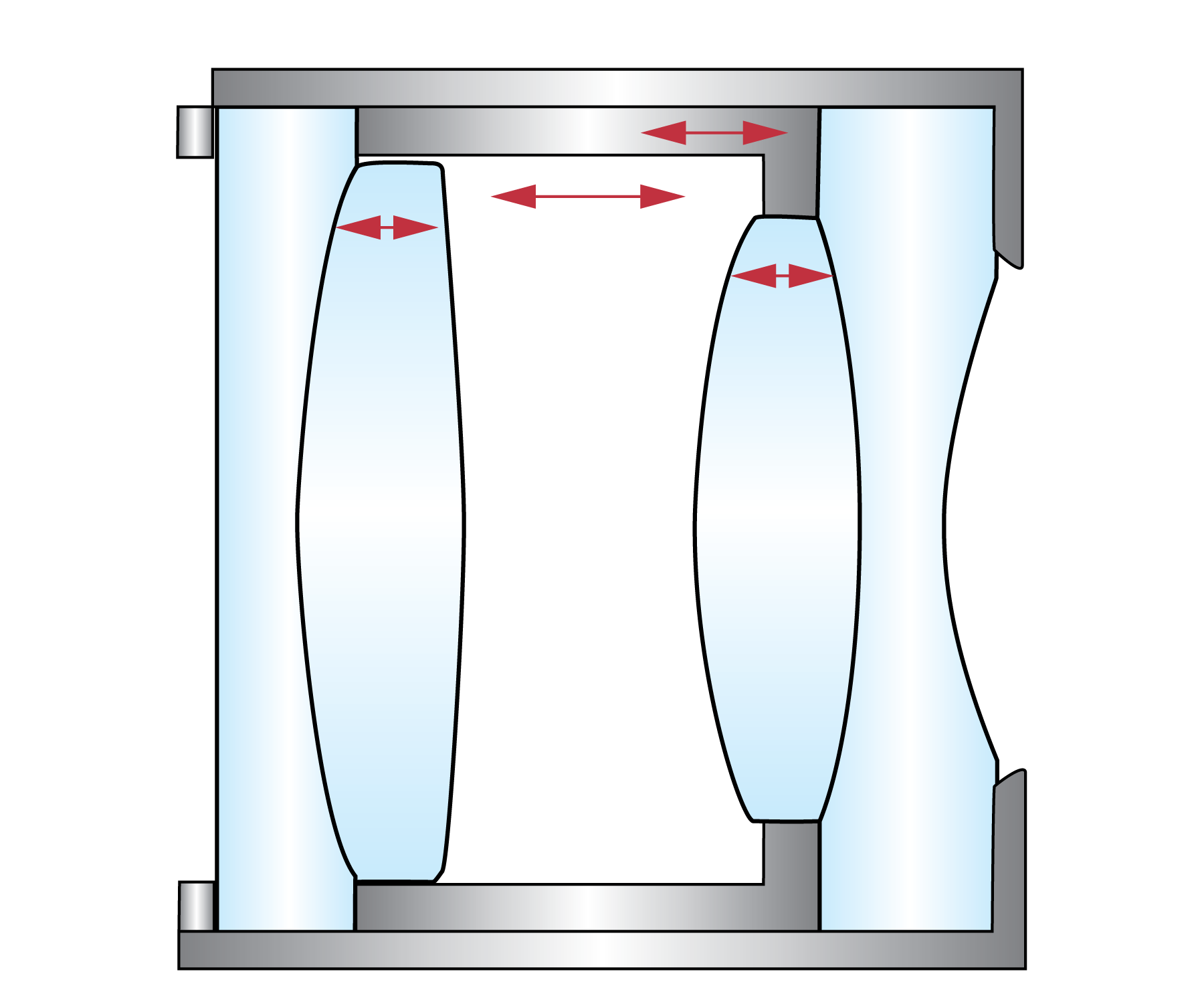
Figure 6: Shrinking and growing compensations of a rigorous athermal design
The changing pressure related to altitude changes also needs to be considered when designing lenses for UAV applications. During optical design, the air inside and outside of the lens needs to be modeled accurately at different pressure values in simulation software to predict the effects this has on the lens and create a final design that can tolerate these shifts in pressure.
Because of the quick accelerations experienced by UAVs, the assemblies may also need to be ruggedized to maintain pointing stability throughout shock and vibration, meaning that a spot on the object being imaged will consistently map to the same spot on the camera sensor. This ruggedization is done by streamlining optomechanics, reducing the number of moving parts, and introducing glue around individual lens elements in order to avoid them shifting in the lens barrel and causing misalignment.
Finally, ingress protection might be needed to prevent particulates and moisture from entering the lens assembly. Dust and water would reduce the performance of the lens because the light hitting these particulates gets redirected in unpredictable ways. This can be mitigated by sealing the elements inside the lens barrel from the outside world using O-rings or purging the air inside of a lens during assembly and replacing it with an inert gas (Figure 7). This purging will remove particulates inside the lens and not allow any particulates from the outside to reach the inside of the lens.
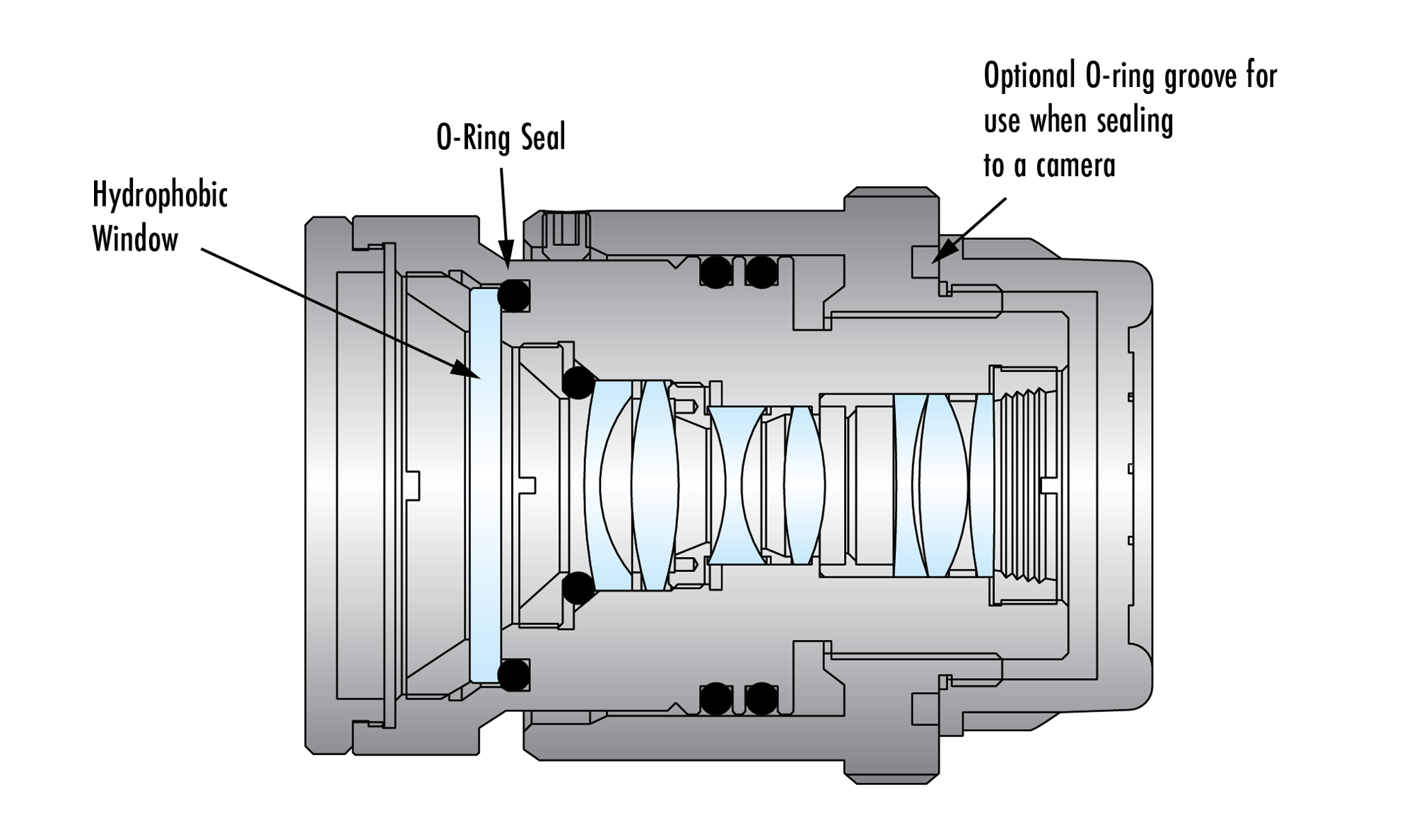
Figure 7: Ingress protected lenses are sealed to keep out moisture, dust, and other contaminants from the outside.
This ingress protection also helps prevent condensation on lenses. When humidity exists in the assembly, water particles can very easily adhere to the lens, redirecting the light rays hitting that lens. This heavily reduces system performance and is a major problem faced when imaging applications are at low temperatures, like those experienced at high altitudes. As Figure 7 shows, this condensation can be further mitigated with a hydrophobic window on the front of the assembly.
UAV Imaging Lenses from Edmund Optics®
The UAV Series Fixed Focal Length Lenses designed and manufactured by Edmund Optics® are compact, lightweight, and high-resolution lenses designed for use on autonomous vehicles and drones. These infinite conjugate lens assemblies are athermalized for wide temperature ranges and ruggedized to maintain performance throughout shocks and vibrations, making them ideal for drone mapping and surveying, aerial imaging, and photogrammetry applications.
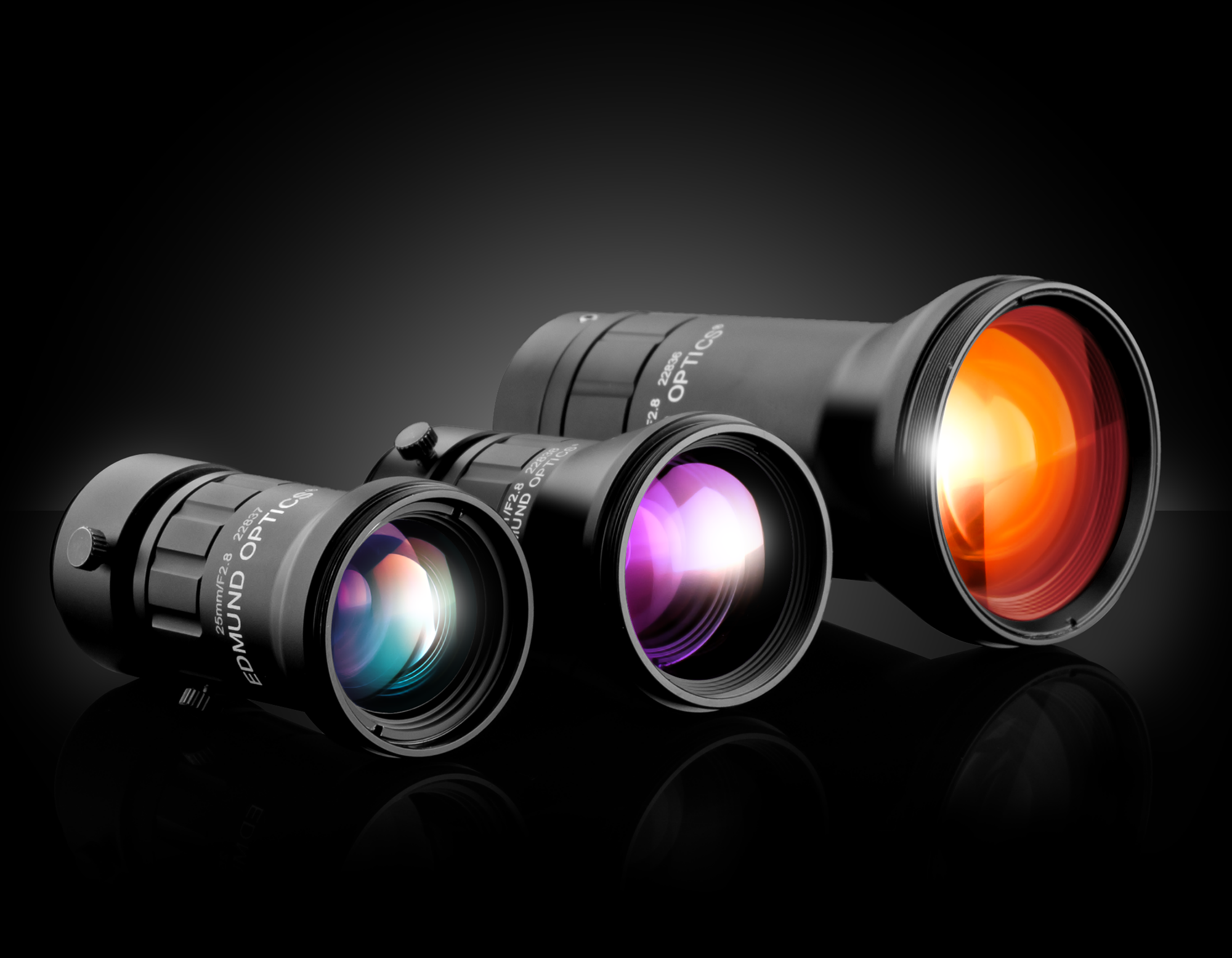
Figure 8: The UAV Series Fixed Focal Length Lenses from Edmund Optics®
The UAV Series Lenses maintain a compact size while achieving up to 24.6 megapixel resolution on 2.74µm pixel size sensors, which is optimized for use with high-resolution image sensors like the 4th-Generation Sony Pregius 1.2” IMX530 and IMX540 sensors.
The mechanics of the lenses are streamlined to make them more lightweight and mobile without sacrificing performance. The unique harsh environments experienced by drones and other robotic systems also require ruggedizing the lens assemblies for temperature swings, and shocks and vibrations. This is lacking in other available solutions. The ruggedization of the UAV Series Lenses is so robust that they are able to be used in environments as extreme as space applications.
Locking focus and iris rings in the UAV Series Lenses prevent unwanted adjustments during use. These lenses are also optimized for longer working distances, as these mobile robots are often looking at objects further away than what is found on a factory floor. Extra care was also taken to minimize stray light throughout the lens assemblies, which is critical because the conditions found in robotics environments are much less controlled than those on a factory floor.
Given a reasonable opportunity size, stability ruggedization and ingress protection are modifications that can be implemented to these optical designs upon request.
More Resources
- Ruggedization of Imaging Lenses
- Imaging Resource Guide
- How an Edmund Optics Imaging Lens is Made Video
- Hot and Cold: Athermalization Ruggedization Webinar Recording
References
- Wawrzyn, D. (2023, August 3). What is Ground Sample Distance and How Does it Affect Your Drone Data? Propeller. https://www.propelleraero.com/blog/ground-sample-distance-gsd-calculate-drone-data/
- Leslie, J. (2023). How High Can a Drone Fly? Drone Survey Services. https://dronesurveyservices.com/can-you-fly-a-drone-in-a-public-park-in-the-uk/
- Miller, C. (2021, April 15). Human Responses to High Altitude. Pressbooks. https://humanbiology.pressbooks.tru.ca/chapter/8-8-human-responses-to-high-altitude/
- Mihalcea, G. (2023). Why are binoculars filled with nitrogen gas? Expert Binoculars. https://expertbinoculars.com/why-are-binoculars-filled-with-nitrogen-gas/















or view regional numbers
QUOTE TOOL
enter stock numbers to begin
Copyright 2023, Edmund Optics Inc., 14F., No.83, Sec. 4, Wenxin Road, Beitun District , Taichung City 406, Taiwan (R.O.C.)
California Consumer Privacy Act (CCPA): Do Not Sell My Information